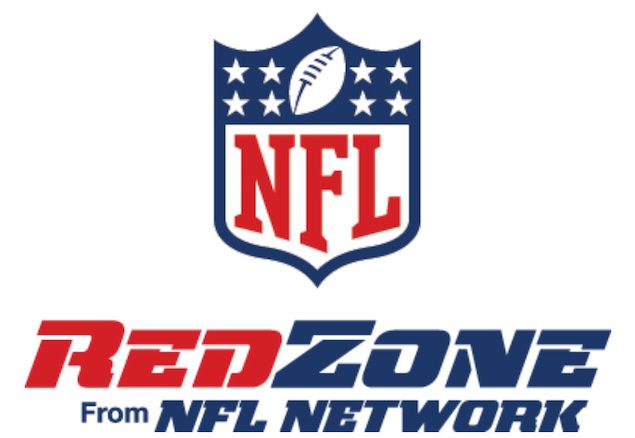The 1920s, 30s and 40s are generally regarded as the golden age of illustration in America. Artists prospered painting ads and point-of-purchase for all of the best-selling consumer products marketed during these decades, brands like Ivory Soap, Hires Root Beer, Arrow Collars and Packard automobiles. This period is also regarded as the greatest era of billboard and poster use in history.
The top commercial artists of the time created timeless images that still define our culture. Norman Rockwell (the Four Freedoms), James Montgomery Flagg (Uncle Sam pointedly wanted “You for US Army”) and the greatest advertising illustrator of them all, Haddon Sundblom.
Who’s Haddon Sundblom? He’s the man who created the Santa Claus that we all know and love today, thanks to Coca-Cola ads.
Born in Muskegon, MI, in 1899, Sundblom moved to Chicago in 1912. Following a stint as an office boy at the Charles Everett Johnson Studios for illustration in the early 1920s, he started his own firm with two partners in 1925. One of his earliest clients was The Coca-Cola Company, which used enormous amounts of art for magazine ads, billboards and P-O-P. Sundblom became the company’s favorite artist, one whose work would grace over half of the brand’s extensive network of billboards by the 1940s.
It was 1931 when Sundblom found his life’s work, for that was the year he was commissioned to paint his first Santa Claus for Coke’s promotional use.
“Coke was trying to increase the sales of soft drinks during the traditionally slow winter months,” relates Coca-Cola Archivist Phil Mooney. “In 1930, Coke hired an artist named Fred Mizen to illustrate Santa Claus. He painted a department store Santa pausing at a soda fountain. This image didn’t resonate.”
Enter Sundblom in 1931. His vision of Santa differed markedly from the others of that era. As Barbara Fahs and J.R. Taylor describe it in their book, Dream of Santa, “Disliking the cheap costumes and meager looks common to the department store and charity Santas, Sundblom countered with abundance — a lavish use of fur and leather (belt, boots, and gloves were all massive), a billowing beard and a waistline so ample it required a belt and suspenders. Santa, as seen by Sundblom, provided an image that fit perfectly, a sense of instant recognition that glowed with warmth and overwhelmed disbelief.”
Coca-Cola introduced a new Sundblom Santa each year from 1931 to 1964. From 1944 to 1953, according to Fahs and Taylor, “There were two or even three Santa paintings — one for billboards, one for magazines and another for point of sale items.”
“It was one of those incredible marketing programs that crossed the line from advertising to popular culture,” Mooney summarizes.
D’Arcy, Coke’s agency from 1906 to 1956, was responsible for most of Sundblom’s commissions. Typically, the agency would develop each year’s overall concept and present it to Sundblom with a series of line drawings. Sundblom would respond to the agency with some charcoal sketches of what he had in mind. Once approved, these would be followed by rough color renderings, which, after a final approval by D’Arcy, would lead to the actual painting.
Although a fast painter, generally completing each painting in one or two sittings, Coke found they usually had to wait to get Sundblom’s full attention, for in addition to crafting Coke’s Santas, Sundblom was also the creator of the Quaker Oats man and the Aunt Jemima character. In the 1950s, D’Arcy began to use other artists for background needed to create the different types of marketing elements required. No one else, however, painted Santa Claus; he was Sundblom’s work alone, from start to finish.
Demand for illustration shrank in the 1960s. The 1965 passage of the Federal Highway Beautification Act cut the number of billboards in use. Then there was television, a medium that was the antithesis of the printed word and the painted image. Magazines like Life, Look, Colliers, and the Saturday Evening Post either went under or ceased weekly publication.
Sundblom delivered his last two illustrations of Santa to Coca-Cola in 1964. Although this marked the end of Coke’s formal advertising campaign using his art, it was far from the end of Coke’s commercial use of these images.
“We have tried to update Sundblom’s work, but it’s not the same thing,” notes Mooney, “It’s awfully hard to move people from what they’re comfortable with.” Not a year has passed that someone somewhere wouldn’t borrow one of Sundblom’s old illustrations to promote the holidays. A scroll through e-Bay brings up everything from Sundblom Santa glassware from a fast food chain, to Sundblom Santa coasters from a gasoline chain, to even Sundblom Santa collectable lapel pins from the Los Angeles Coca-Cola bottler.
The man who raised Santa Claus passed away in 1976. Today, the original commercial art he created at a rate of about $1,000 per painting, for everything from advertising billboards, to calendars to display signs, is sold at the nation’s top art auctions and treasured by galleries and museums everywhere. This past March, New York auction house, Christie’s, sold a late example of one of Sundblom’s Santa’s for $57,360, a figure way over their high-end estimate of $30,000 for the work. This example looks like a steal compared to the Sundblom painting sold in May 2000 titled; “Beautiful Woman at the Beach.” This innocuous piece, probably done as a calendar illustration, sold for $154,000. As Mooney summarizes; “As a body of work, Sundblom’s paintings are the crown jewels of Coca-Cola.”
Rod Taylor is senior VP-sales promotions and sports marketing for CoActive Marketing in Cincinnati, OH. He can be reached at rtaylor@getcoactive.com.
Santa Claus and how he grew
Dec. 6, 343 — St. Nicholas of Myra dies. Legend has it that Nicholas, Bishop of Myra in what is now Turkey, was revered for his acts of charity. The tradition of bishops wearing red robes becomes the basis for Santa Claus’ clothing.
Late 16th Century — During the Protestant Reformation, Nicholas the gift giver is replaced by the Christ child, known in German as the Christindklein, who began to travel with Nicholas. In Holland, St. Nicholas still used his own name, which in Dutch was Sinterklaas.
Dec. 1810 — The New York Historical Society prints a woodcut that depicts St. Nicholas as tall and wearing long robes. The illustration comes with a Dutch poem about “Sancte Claus.”
1821 — New York printer William Gilley prints a poem that depicts a short “Santeclaus” dressed all in furs and driving a sleigh with one reindeer.
Dec. 24, 1822 — Clement Moore composes his classic poem for his six children. Moore originates Santa’s entry by chimney and the idea of eight reindeer, as well as creating their names.
1863 — Political caricaturist Thomas Nast begins a yearly series of Santa illustrations for Harper’s Weekly. Nast’s Santas, published until 1886, are known for their voluminous beards and jolly dispositions. Nast originates the concept of Santa making toys in his workshop.
1885 — Louis Prang of Boston prints the first Christmas card to depict Santa Claus in a bright red suit.
1931 — Haddon Sundblom begins a 33-year relationship with Coca-Cola, and creates what has become today’s version of Santa.
 Network
Network

